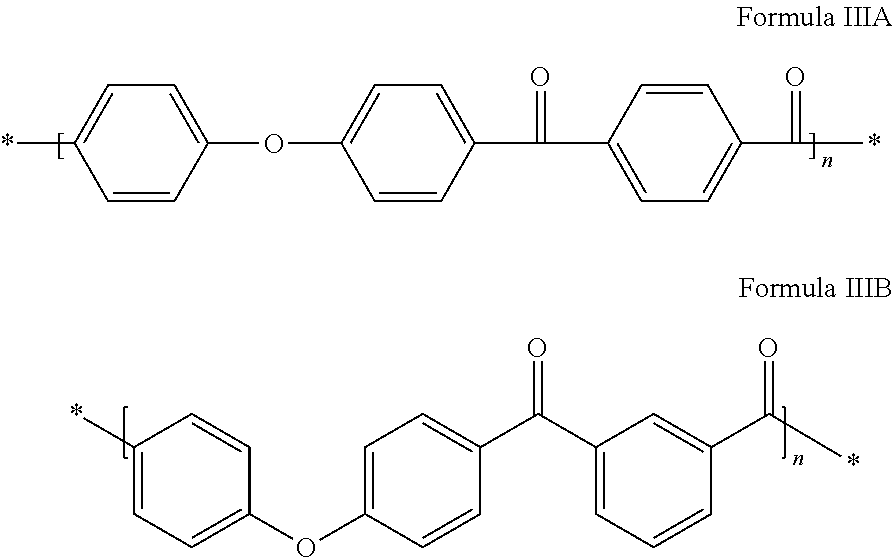Method of grinding poly(aryl ether ketones)
a technology of aryl ether and polymer, which is applied in the direction of cellulosic plastic layered products, electric/magnetic/electromagnetic heating, additive manufacturing processes, etc., can solve the problems of large fines, substantial cost, and need for cooling power supply
- Summary
- Abstract
- Description
- Claims
- Application Information
AI Technical Summary
Benefits of technology
Problems solved by technology
Method used
Image
Examples
example 1
[0036]A polymer in the form of scales of PEKK (OXPEKK SP), of viscosity 0.95 dl / g (viscosity in solution at 25° C. in 96% sulphuric acid according to standard ISO 307) is micronized in a Neuman ICM 7.6 impact grinder-selector at a temperature of 25° C., grinding mill speed 12 000 rev / min, selector speed 4500 rev / min. Three successive grindings give the following granulometry measured on the Insitec T granulometer from Malvern with a focal length of 300 mm (measurement by laser diffraction on dry powder, diameters expressed by volume Dv):
[0037]Dv10=27 μm, Dv50=76 μm, Dv90=180 μm.
[0038]The yield is 99%.
example 2
[0039]A polymer in the form of scales of PEKK (OXPEKK SP), of viscosity 0.85 dl / g (viscosity in solution at 25° C. in 96% sulphuric acid according to standard ISO 307) is micronized in a Neuman ICM 7.6 impact grinder-selector at a temperature of 25° C., grinding mill speed 12 000 rev / min, selector speed 4500 rev / min. Two successive grindings give the following granulometry measured on the Insitec T granulometer from Malvern with a focal length of 300 mm (measurement by laser diffraction on dry powder, diameters expressed by volume Dv):
[0040]Dv10=29 μm, Dv50=81 μm, Dv90=184 μm.
[0041]The yield is 98%.
example 3
Comparative
[0042]A polymer in the form of scales of PEKK (OXPEKK SP), of viscosity 0.87 dl / g (viscosity in solution at 25° C. in 96% sulphuric acid according to standard ISO 307) is micronized in a Mikropull 2DH hammer mill equipped with a grating with round holes of 500 μm at a temperature of −40° C. Grinding gives the following granulometry measured on the Insitec T granulometer from Malvern with a focal length of 300 mm (measurement by laser diffraction on dry powder, diameters expressed by volume Dv):
[0043]Dv10=64 μm, Dv50=155 μm, Dv90=322 μm.
[0044]Sieving at 145 μm on a Finex 22 sieve made by Russel gives the following granulometry:
[0045]Dv10=47 μm, Dv50=95 μm, Dv90=148 μm at a yield of 48%.
[0046]It can be seen that at low temperature, the yield is far lower than was obtained by grinding the scales at 25° C.
PUM
| Property | Measurement | Unit |
|---|---|---|
| Temperature | aaaaa | aaaaa |
| Temperature | aaaaa | aaaaa |
| Temperature | aaaaa | aaaaa |
Abstract
Description
Claims
Application Information
 Login to View More
Login to View More - R&D
- Intellectual Property
- Life Sciences
- Materials
- Tech Scout
- Unparalleled Data Quality
- Higher Quality Content
- 60% Fewer Hallucinations
Browse by: Latest US Patents, China's latest patents, Technical Efficacy Thesaurus, Application Domain, Technology Topic, Popular Technical Reports.
© 2025 PatSnap. All rights reserved.Legal|Privacy policy|Modern Slavery Act Transparency Statement|Sitemap|About US| Contact US: help@patsnap.com



